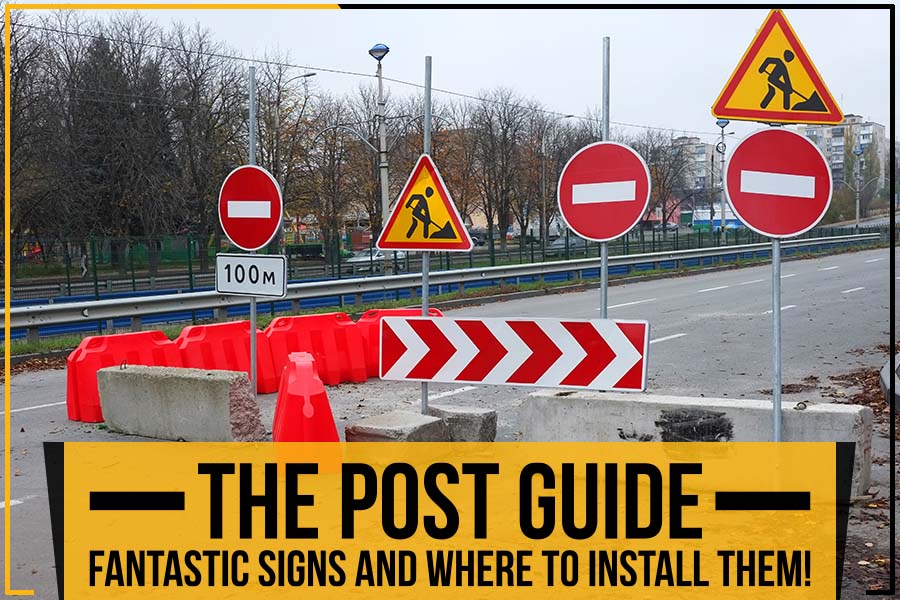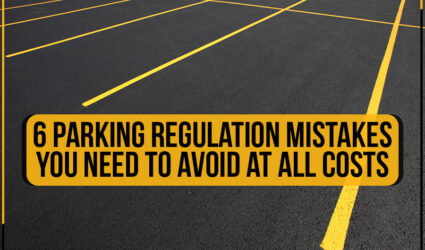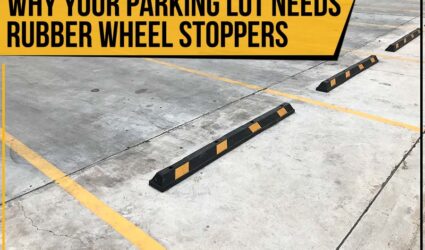Sometimes the signs on traffic lights, lines, and controls are enough to ensure that people are safe while driving. However, there are occasions where you have to put up a signpost or panel so that the public is informed of the consequences if they conduct an illegal act or do something dangerous (speeding, overtaking, drifting, etc.). Signs like these help in making your neighborhood in Calgary, AB, a much stroll-friendly area!
Now, traffic sign symbols are extensive and beyond the scope of this blog post; so, we will focus on the types of materials that signs are made from and how they’re installed.
Vinyl Panels
This material can be used to make banners with advisory content displayed on boards, hung by cords, or made into reflective adhesive traffic sign stickers to be displayed on a metallic signpost.
Installation: The least you need is drill bits, mounts, and screws of good quality. Vinyl panels can be mounted onto plastic frames for windows or even placed out by the doors. With regards to traffic signs, the stickers are the most straightforward application. Peel and stick.
Aluminum Signposts
Aluminum is popularly used in traffic signposts to display symbols specific to the hazards in the area. It is an affordable and resilient metal that has a protective oxide coating. Reflective vinyl stickers and lettering can be applied onto an aluminum signpost, even decals! A blind corner and sharp turn may have a signpost to warn drivers of a collision possibility or a school crosswalk warning so that they slow down. Aluminum signposts are ideal in terrain where not many buildings are erected.
Installation: If the sign has to be mobile (to move from place to place), the post is set into a concrete base that acts as a balanced weight for the sign. For fixed posts, a concrete saw is used to cut away a square piece of the asphalt (16” by 16”) and excavated to a depth of 24”, the signpost is inserted into the hole, facing the right direction, and ready-mix concrete is packed in. Level it with the surface using a trowel. Now pop on the rain cap on the post, use the sign mount fixtures, and the sign itself. Screwdrivers and pliers complete the work.
Aluma Lite Panels
These are for heavy-duty purposes. The material is a more substantial aluminum composite and can weather almost any season, so it is used for large panels. Signs made from this material are intended to be mounted on buildings or roofs, utilizing a billboard frame or cords and screws to hold the panels to the side of the building.
Installation: To mount aluma lite panels onto solid walls, drill holes on the top center of the panel and place it on the wall to drive in the first drive rivet. That rivet will act as a fixture while you drill for the rest of the fasteners needed. For drywalls, be sure to use a drywall anchor instead to mount the aluma panel. If the sign is tiny and light in weight, use double-sided tape for smooth surfaces, while silicone makes for a suitable adhesive on rough surfaces.
At Precision Striping & Lot Restorations, we have performed numerous successful custom and traffic sign installations, plus designs across Calgary, AB, so don’t hesitate to count on our experience. Do get in touch for a free quote.
Our work is as precise as a sculpture with a chisel!





